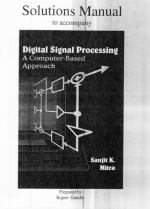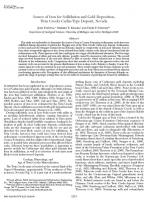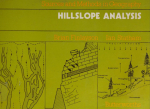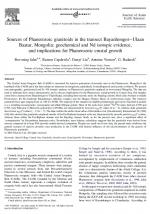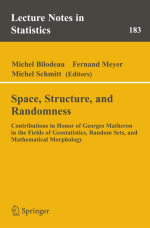The Southeast Missouri Iron Metallogenic Province is comprised of eight known major and numerous minor magnetite and hematite deposits. It is hosted by the Middle Proterozoic St. Francois granite-rhyolite terrane. Host rocks are rhyolites, trachytes, and andesites. Ore is associated with, although not necessarily hosted by, magnetite trachytes. Deposits are associated with caldera subsidence structures and, sometimes, trachyte ring intrusions. Deposits are within or near margins of these structures. Areal association of the deposits with a major Proterozoic tectonic zone, possibly a transform fault, suggests additional tectonic/ structural control on ore emplacement. Magnetite and hematite have been produced in the province; currently, only magnetite is produced. Potential exists for production of rare earth elements, copper, and gold.
A characteristic alteration suite is associated with the iron oxide mineralization. The suite includes silicification, potassium metasomatism, and alteration of host rock to actinolite, chlorite, garnet and epidote. While several alteration types are associated with each deposit, every type is not seen at each deposit.
Chemistry suggests that magnetite and hematite deposits in the province have a unique chemical signature when compared to magnetite not directly associated with the major deposits. In addition, hematite that is an oxidation product of magnetite has a different chemical signature than presumed primary hematite.


